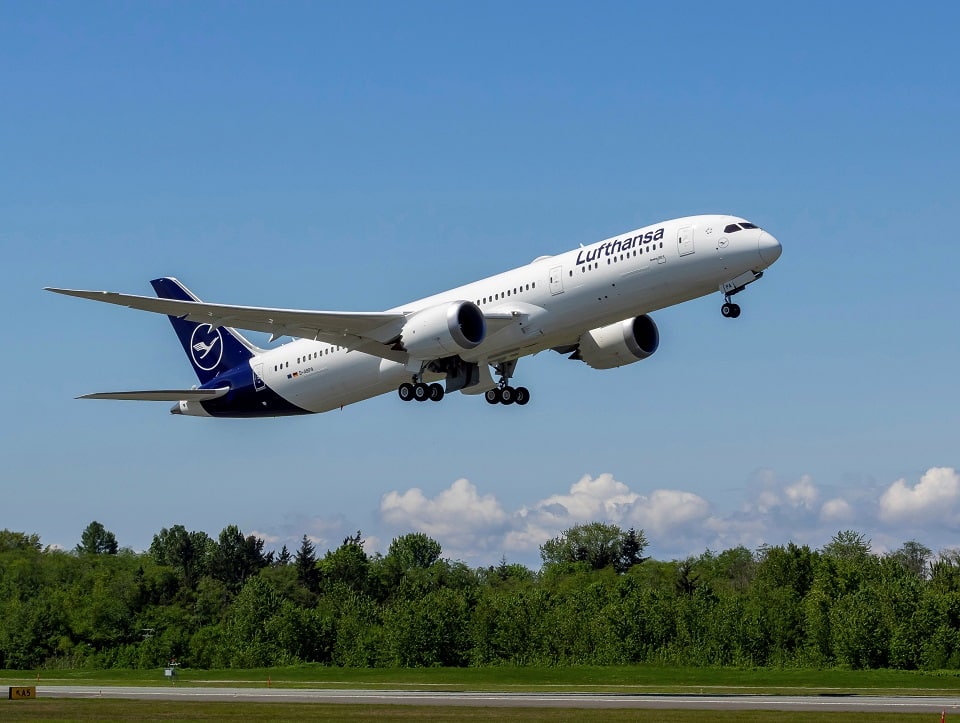Airlines
ZeroAvia Makes Aviation History, Flying World’s Largest Aircraft Powered with a Hydrogen-Electric Engine

-
19-seat Dornier 228 twin-engine aircraft takes to the sky in testbed configuration for first flight as part of the HyFlyer II project.
-
Milestone moves ZeroAvia forward on the way to meeting target of commercial flights using only hydrogen fuel cell power by 2025, and scaling the engine technology to larger airframes.
-
Marks a significant step in addressing aviation’s climate change impact and a major innovation success for the UK Government’s Jet Zero Strategy.
The largest aeroplane in the world to be propelled by a hydrogen-electric engine, flown by ZeroAvia, marked a significant advancement in zero-emission flight. The pioneer in zero-emission aviation went to the sky for the first time with its 19-seat Dornier 228 testbed aircraft. The aircraft’s left wing has been retrofitted with a full-size prototype hydrogen-electric powerplant.
Comparison between Dornier-228 v/s Indonesian N219(Opens in a new browser tab)
The flight took place from the company’s R&D facility at Cotswold Airport in Gloucestershire, UK, and lasted 10 minutes. At 13.35 pm GMT this afternoon the aircraft completed taxi, take-off, a full pattern circuit, and landing. The landmark flight forms part of the HyFlyer II project, a major R&D programme backed by the UK Government’s flagship ATI Programme, which targets development of a 600kW powertrain to support 9-19 seat aircraft worldwide with zero-emission flight.
The twin-engine aircraft was retrofitted to incorporate ZeroAvia’s hydrogen-electric engine on its left wing, which then operated alongside a single Honeywell TPE-331 stock engine on the right. In this testing configuration, the hydrogen-electric powertrain comprises two fuel cell stacks, with lithium-ion battery packs providing peak power support during take-off and adding additional redundancy for safe testing. In this testbed configuration, hydrogen tanks and fuel cell power generation systems were housed inside the cabin. In a commercial configuration, external storage would be used and the seats restored.
Top 6 Largest Passenger Aircraft in the World.(Opens in a new browser tab)
All systems performed as expected. This is the largest ZeroAvia engine tested to date, and places the company on the direct path to a certifiable configuration to be finalized and submitted for certification in 2023, with this programme also serving as key to unlocking speedy technology development for larger aircraft. ZeroAvia’s 2-5 MW powertrain programme, already underway, will scale the clean engine technology for up to 90-seat aircraft, with further expansion into narrowbody aircraft demonstrators over the next decade.
ZeroAvia will now work towards its certifiable configuration in order to deliver commercial routes using the technology by 2025. The Dornier 228 will conduct a series of test flights from Kemble and later demonstration flights from other airports. Almost exactly two years ago, ZeroAvia conducted the first of more than 30 flights of a six-seat Piper Malibu aircraft using a 250kW hydrogen-electric powertrain.

Airlines
German Carrier Lufthansa Plans for 20% Job Cuts in Administration

Lufthansa Airlines is reportedly planning significant job cuts in its administrative workforce. According to Manager Magazin, the German carrier intends to reduce administrative positions by 20% as part of its cost-cutting measures amidst an anticipated decline in earnings.
This reduction could impact approximately 400 jobs, the report revealed. While Lufthansa has not directly commented on the layoffs, the airline confirmed its goal of cutting administrative costs by 20% by 2028.
Russian Su-57 Fighter Secures First International Sale at Zhuhai Airshow
The strategy involves leveraging digital technologies, including artificial intelligence and automation. “A hiring freeze is currently in place for administrative roles at Lufthansa Airlines,” said a company spokesperson.
The staff reduction is expected to occur through natural attrition and age-related turnover, rather than forced layoffs. The internal projection cited by the magazine warns that Lufthansa could face an operating loss of €800 million ($843.92 million) by 2026 if no corrective measures are taken.
Lost Tool Found in Qantas A380 After 34 Flights
The report highlights the challenges companies face in aligning workforce requirements with current and future demands. Failure to adapt could necessitate drastic actions, such as restructuring and layoffs, which carry significant repercussions for both the organization and its employees.
As Lufthansa navigates these challenges, the airline appears committed to balancing cost efficiency with digital transformation to maintain its competitiveness in a rapidly evolving industry.
-

 Aviation2 months ago
Aviation2 months agoBoeing confirms 797: A New Era for Mid-Size Aircraft
-

 Aviation2 months ago
Aviation2 months agoMicrosoft Flight Simulator Raises $3 Million to Bring Back the An-225 Mriya
-

 Aviation2 months ago
Aviation2 months agoLockheed and Tata Team Up to Build C-130J MRO Facility in India
-

 Airlines2 months ago
Airlines2 months agoQantas Engineers Stage Walkout Over Cost of Living Concerns
-

 Airlines2 months ago
Airlines2 months agoQatar Citizens Can Travel to the United States Without a Visa
-

 Aviation2 months ago
Aviation2 months agoBoeing Offers 25% Pay Increase & Promise to Build Next Plane in Seattle
-

 Aviation2 months ago
Aviation2 months agoQatar Airways bans these new Electronic Devices on plane
-

 Airlines2 months ago
Airlines2 months agoEmirates Ends 28-Year Singapore-Melbourne Fifth Freedom Route








